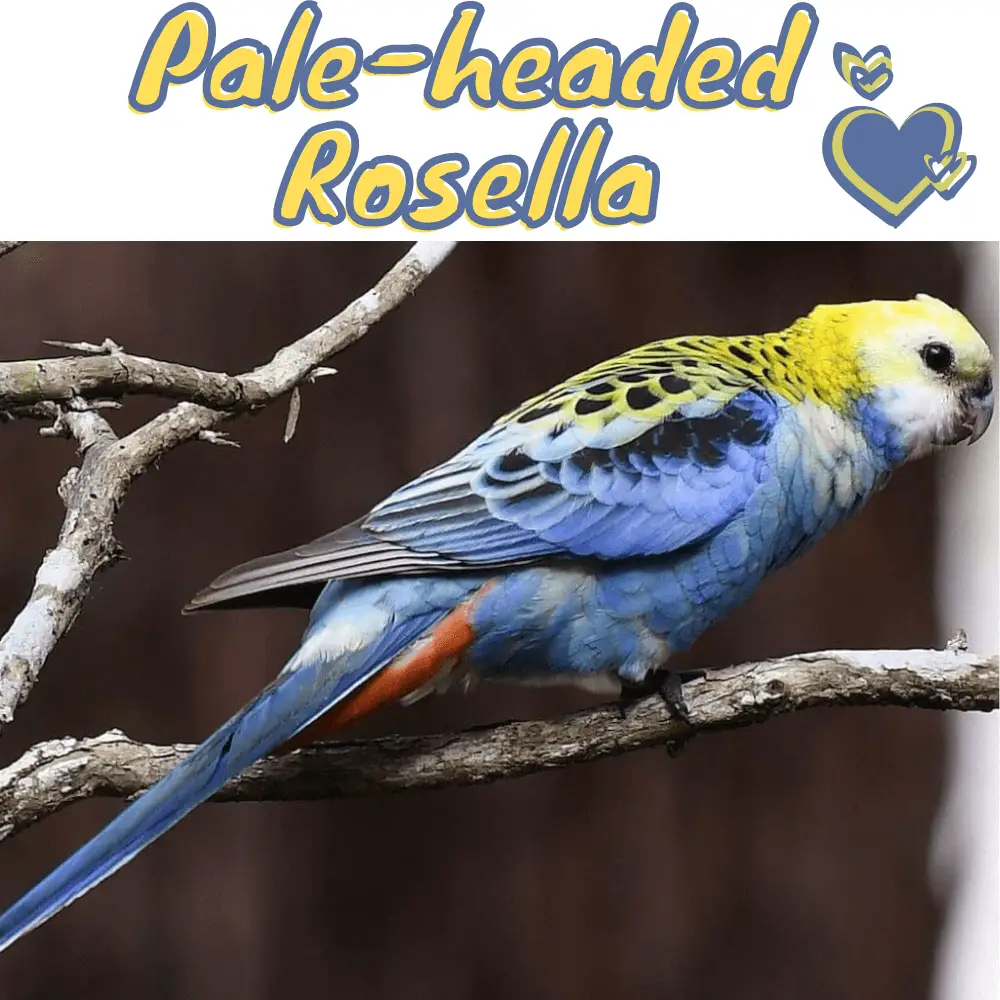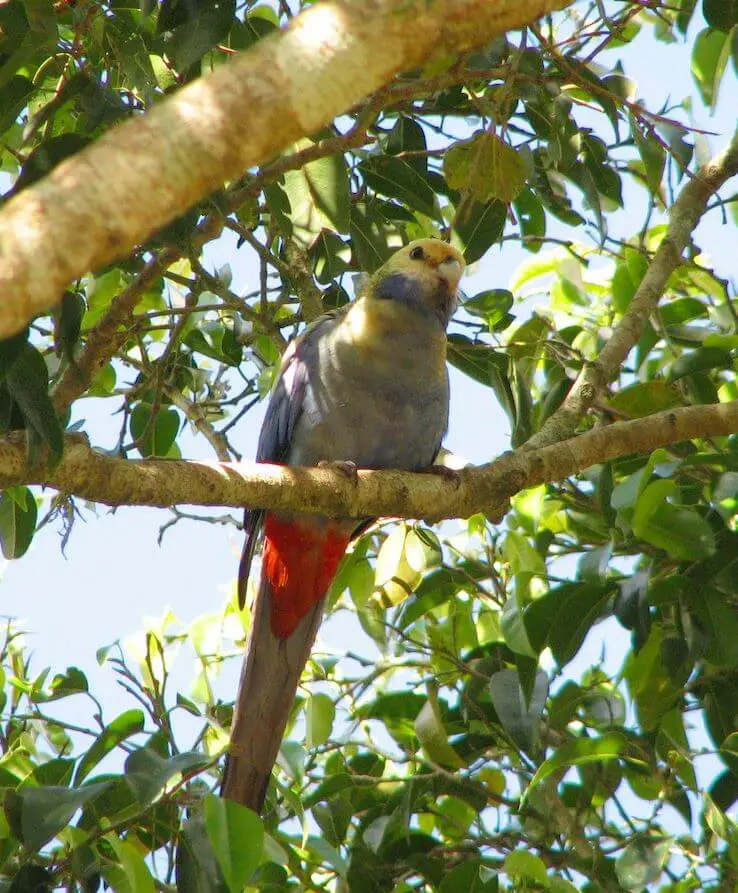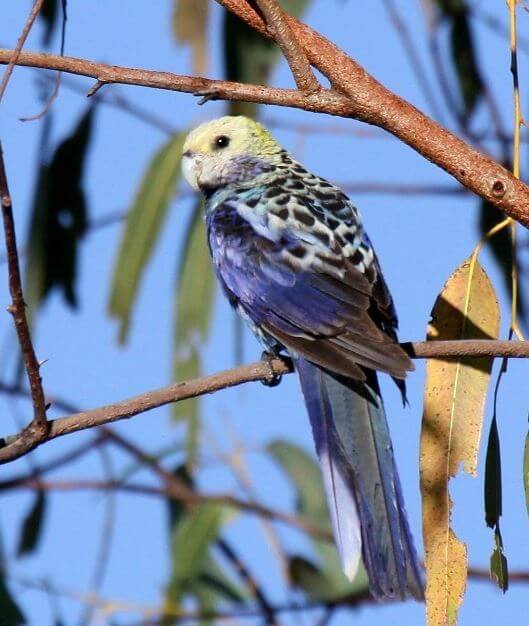
Pale-headed Rosella 30 cm; 100–175 g. Bill and face white shading to yellow, lightly edged black, on nape and sides of neck; chin and lower cheeks grey-blue;
mantle, back, and scapulars black with broad yellow edges, making scaled effect, rump yellow; wing as in P. venustus; breast pale yellow shading to pale blue on belly;
vent and under tail-coverts red; tail bluish-green centrally, outer feathers blue-tipped white. Pale-headed Rosella Female similar to the male, but has a pale underwing stripe.
Immature like Pale-headed Rosella female but duller. Race palliceps lacks blue-grey on cheeks but usually has entire underparts grey-blue; rump pale blue to greenish-blue.
Editor’s Note: This article requires further editing work to merge existing content into the appropriate Subspecies sections. Please bear with us while this update takes place.

Forms a species group with P. venustus and P. eximius, and sometimes considered conspecific with both. The proposed form mackaiensis (Mackay, E Queensland) is synonymized with palliceps;
form elseyi is an intergrade between latter and nominate. Hybrids of present species with P. elegans were originally thought to be a separate species, “P. mastersianus” (Masters’s Rosella). Two subspecies of Pale-headed Rosella were recognized.
Distribution
Editor’s Note: Additional distribution information for this taxon can be found in the ‘Subspecies’ article above. In the future, we will develop a range-wide distribution article.

Habitat
Occurs in a variety of habitats, including savanna woodland, paperbark woodland, riverine and swamp growth, Banksia-dominated coastal heath, wet sclerophyll forest, fringes of the lowland rain forest, farmland and clearings.
Movement
Sedentary; some local movements at the edges of the range are related to climatic pressures.
Juvenile Pale Headed Rosella (Wild)
Diet and Foraging
Wide range of plants utilized, with 47 species recorded; forages more arboreally than P. eximius. Seeds of Eucalyptus camaldulensis, Casuarina cunninghamiana, Melaleuca linariifolia, Onopordon acanthium, Xanthium chinense, X. spinosum, Callitris, and Acacia were recorded, also blossoms of Melaleuca, fruits of Dodonaea triquetra. Can be a pest in orchards and maize fields.
SOURCE: faunagraph
Sounds and Vocal Behavior
Flight Pale-headed Rosella call is a loud, dry “chit-chit”, repeated in loose series. When perched utters rather melodious squabbling phrases and a series of repeated pure whistles, “pee-pee-pee-pee” or “tu-tuu..tu-tuu..tu-tuu”.
Breeding
Feb–Jun in N, though with some variation depending on rainfall, Sept–Dec in S. Pale-headed Rosella Nest in a deep hollow in living or dead tree, preferably a eucalypt near a watercourse, but also in a stump or hollow fence post. Eggs 3–5; incubation lasts 19 days; nestling period c. 5 weeks.
Conservation Status

Pale-headed Rosella
Not globally threatened. CITES II. Abundant throughout most of the range, benefiting from agriculture and cereal cultivation; only in S, where sympatric with closely related P. eximius, is it patchy in numbers.




















